Electric paddleboards and dolphin feeding spark Straddie anger on Australia Day
A dramatic drop in dolphin sightings at Stradbroke Island has been linked to electric paddleboards driving the beloved creatures away and a nearby tourist attraction luring them there.
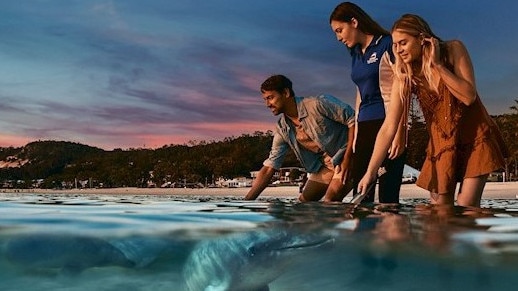
News
Don't miss out on the headlines from News. Followed categories will be added to My News.
Visitors to Straddie on the Australia Day long weekend may not get to see any of the island’s iconic dolphin pods after claims battery-powered paddleboards were driving them away as they were lured elsewhere by a nearby dolphin-feeding attraction.
The popular electric-powered boards, which generate vibrations in the water, are being blamed for the lack of dolphin appearances in the island’s waters this summer.
Stradbroke Island businessman John Truman said since the electric boards had become popular, the dolphins had been scared away, with the noise affecting their sonar receptors.
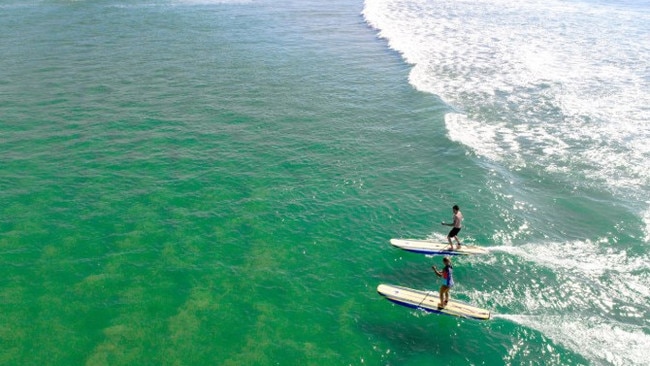
He said scientific evidence from Italian researchers, published in the scholarly Marine Pollution Bulletin in 2024, showed there were potential harmful effects of the battery-powered stand-up paddleboards on the bottlenose dolphins, which frequented North Stradbroke Island.
“These electric paddleboards emit continuous, tonal, high-frequency components that are highly detrimental to dolphins,” Mr Truman said.
“The noise emissions have caused dolphins to vacate areas where the boards are used, a trend that has alarmed residents and regular visitors and will impact on the island’s tourism industry.
“I have been under water when these machines are being used and the noise and vibrations are extremely loud.
“Everyone loves to surf with the dolphins and watch them in the waves but the noise from these machines is too much for them and they are not coming into these beaches.”
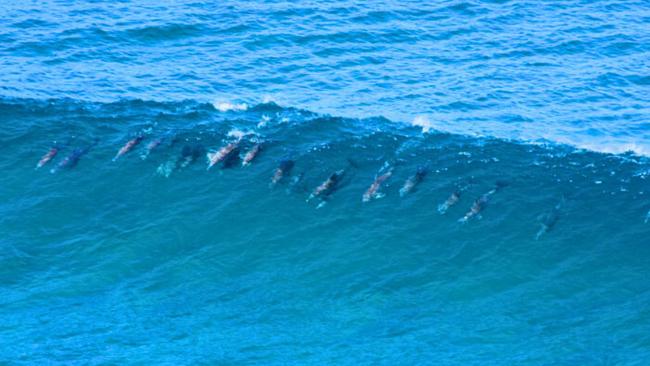
Questions about the absence of dolphins at Straddie followed allegations that the loveable marine animals were preferring a tourist attraction 25km away at Moreton Island’s Tangalooma Resort.
Tangalooma tourists pay tour and accommodation package fees of up to $295 to get into the water and feed the animals as part of the resort’s profitmaking business.
Tangalooma Resort manager of the dolphin feeding program Sue Hassard said the resort had a special Dolphin Feeding Permit obtained through Moreton Bay Marine Parks in 1992, which allowed it to feed the dolphins.
“We are only allowed to feed the dolphins that have been born into the same pod that has been coming to Tangalooma since the 1980s,” Ms Hassard said.
“On occasion we have seen random dolphins that aren’t known to us, but as soon as the feed starts they swim off.
“The resort does not attribute a revenue to the activity which is solely funded by the Resort to raise awareness of dolphin protection.
“During the dolphin feeding program that starts at sunset each day, and goes for about an hour, we do have jurisdiction over the dolphin feeding area which includes the beach and the water.”
Stradbroke Island Tourism Adventures owner Mark Jones said Straddie businesses were suffering and called for the state government to enforce the laws of the Marine Park, which ban feeding of dolphins and greater controls over the use of electric-powered marine engines including electric paddleboards.
“At Amity Point, less than 25km away from Tangalooma, it is illegal to feed dolphins with tourists eligible to get a court fine of up to $12,000 for doing so,” Mr Jones said.
“This should not be allowed as it is all part of the National Marine Park.
“It is hypocritical that the same government agency that bans feeding dolphins at Amity permits it at Tangalooma labelled as ‘research’ but we have not seen any evidence or publication to show what they are researching.
“Tangalooma is really just a tourist attraction.”
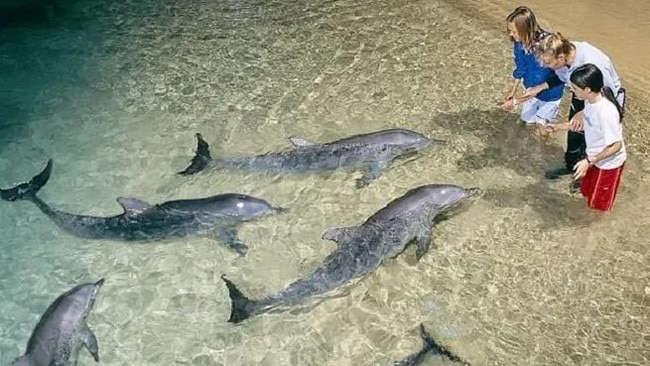
Tangalooma Resort manager of the dolphin feeding program Sue Hassard said the resort had a special Dolphin Feeding Permit obtained through Moreton Bay Marine Parks in 1992, which allowed it to feed the dolphins.
“We are only allowed to feed the dolphins that have been born into the same pod that has been coming to Tangalooma since the 1980s,” Ms Hassard said.
“On occasion we have seen random dolphins that aren’t known to us, but as soon as the feed starts they swim off.
“The resort does not attribute a revenue to the activity which is solely funded by the Resort to raise awareness of dolphin protection.
“During the dolphin feeding program that starts at sunset each day, and goes for about an hour, we do have jurisdiction over the dolphin feeding area which includes the beach and the water.”
Tangalooma Resort is required to provide information every year to the state government about its Wild Dolphin Feeding Program, which is not a scientific program.
A Department of the Environment, Tourism, Science and Innovation spokesman said Tangalooma’s permit contains strict conditions, including the type and amount of fish dolphins can be fed, and how fresh it must be.
“We regulate this activity to ensure the dolphins don’t receive their daily food intake at Tangalooma and continue to hunt for fish in the wild,” the spokesman said.
“Unregulated feeding of wild dolphins can interfere with their natural hunting behaviour, their natural pod behaviour, and can cause health issues, particularly if the food isn’t fresh or part of their natural diet.
“Fed, wild dolphins can associate boats and people with free food, which puts them at risk of being struck by vessels or becoming entangled in fishing gear.”
People caught unlawfully feeding dolphins can be issued with fines of $483, and the maximum court-imposed penalty is $12,904.
Maritime Safety Queensland said swimmers must keep at least 50 metres away from dolphins, and skippers must not approach within 150m in front of and behind a pod of dolphins and 50m if approaching from the sides of the pod.
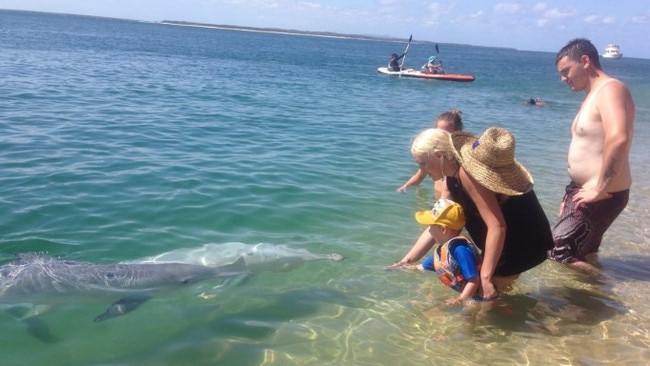
If a dolphin approaches a vessel within these distances the skipper must disengage the gears or withdraw from the area at a speed less than 6 knots.
People who ignore the rules risk maximum penalties up to $17,000.
Straddie residents expressed their concerns on social media after Mr Truman’s research findings were printed in an island publication this week.
Murray Davis and Peta Sunn said they had not seen any dolphins at Frenchman’s Beach this season, despite frequent sightings in previous years.
Katherine Beaton said her daughter experienced discomfort, including a “weird feeling of pressure” and difficulty breathing when the boards were operating nearby.
But not everyone shared the same experience.
Damian Arber said he had seen a large pod of dolphins, including calves, frolicking off Frenchman’s Beach after Christmas, when there were no electric boards operating.





